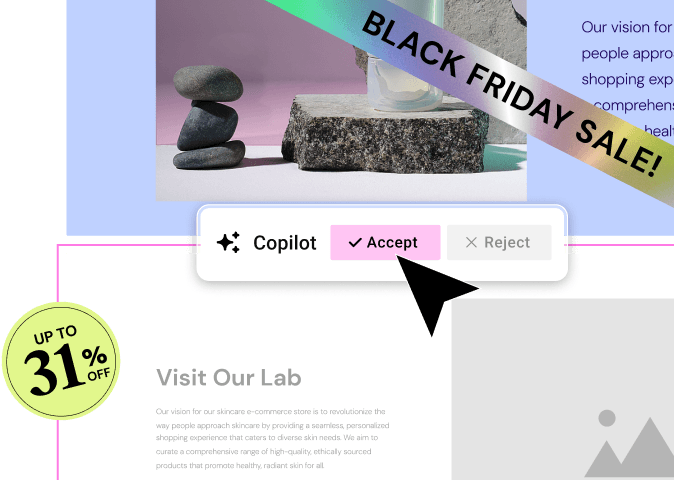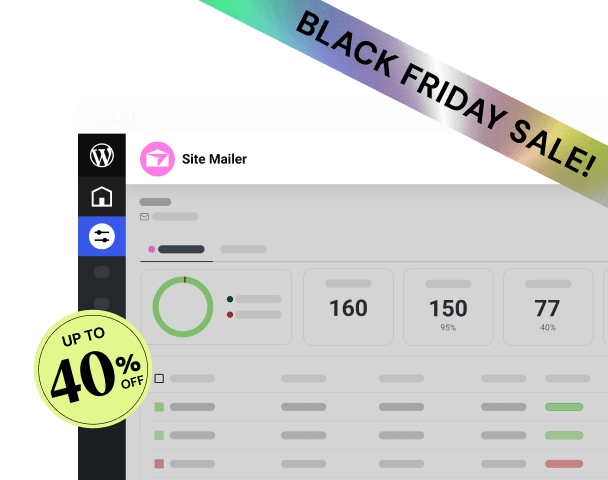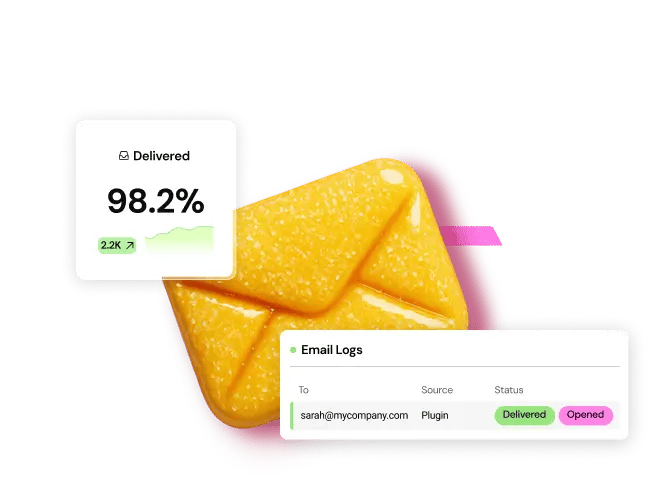Table of Contents
While modern search engines are incredibly smart and will likely find your site eventually, taking proactive steps to submit it can significantly speed up the process. Think of it as sending a formal invitation versus waiting for someone to stumble upon your party. By directly providing a map of your website, you make it easier for search engines to crawl, understand, and index your content, which is the first step toward ranking and attracting organic traffic. This guide will walk you through every step of that process.
Key Takeaways
- Submission Accelerates Discovery: While search engines can find your site on their own, manually submitting it via tools like Google Search Console and Bing Webmaster Tools is the fastest way to get indexed.
- An XML Sitemap is Your Roadmap: This file is a list of all important pages on your website. Creating and submitting a sitemap is the most efficient way to tell search engines about your content.
- Verification is a Must: You must prove you own your website before you can submit it. Both Google and Bing have several straightforward methods to verify your ownership.
- Preparation is Crucial: Before you submit, ensure your site is live, accessible to crawlers, and free of any “no index” tags that might be blocking search engines.
- Content Quality Determines Indexing: Submission gets you noticed, but high-quality, original content is what convinces search engines that your pages are worth including in their index.
- Submission is for Indexing, Not Ranking: Getting indexed means your site is in the search engine’s database. Ranking high in search results requires a long-term strategy focused on SEO, content quality, and building authority.
Understanding How Search Engines Work: Crawling, Indexing, and Ranking
Before we dive into the “how,” it’s helpful to understand the “what.” Search engines perform three primary functions to deliver results to a user. Understanding this process will clarify why submitting your site is so important.
- Crawling: This is the discovery process. Search engines use automated programs called “crawlers” or “spiders” to travel across the web. They move from link to link, constantly looking for new or updated pages to add to their knowledge base. When a crawler finds your website, it reads the content and follows the links on your pages to discover other pages within your site.
- Indexing: After a page is crawled, the search engine analyzes its content, including text, images, and video files. It tries to understand what the page is about and stores this information in a massive database called an index. When you submit your website, you are essentially asking search engines to add your pages to this index. If a page isn’t in the index, it cannot appear in search results.
- Ranking: This is the final and most complex step. When a user types a query into the search bar, the search engine scours its index for the most relevant pages. It then uses a sophisticated algorithm with hundreds of ranking factors to organize those pages in order of relevance and authority. Factors include the quality of the content, the site’s speed, mobile-friendliness, user experience, and the number of other reputable websites linking to it.
Your goal with submission is to make the crawling and indexing processes as smooth and efficient as possible. By giving search engines a clear roadmap, you ensure they find all your important content right away.
Before You Submit: The Essential Pre-flight Checklist
Submitting a website that isn’t ready is like sending out invitations to a party that’s still under construction. You’ll get a much better result if you ensure everything is in order first. Running through this checklist will prevent common issues that can delay or block indexing.
Ensure Your Website is Live and Accessible
This may sound obvious, but it’s a common oversight. Make sure you have removed any “coming soon” or “under construction” pages. If your site was password-protected during development, double-check that this protection has been disabled.
Your website also needs to be on a reliable server. If search engine crawlers attempt to visit your site and it’s down, they won’t be able to index it. Investing in a solid hosting solution is fundamental. For those building with WordPress, a managed solution like Elementor Hosting can be a great choice because it’s specifically optimized for performance and reliability, ensuring your site is always available for crawlers and visitors.
Check for Search Engine Visibility Settings
WordPress has a built-in feature that lets you discourage search engines from indexing your site. This is useful during development but disastrous if left on after launch. It’s one of the most common reasons a new site fails to appear in search results.
Here’s how to check it:
- Log in to your WordPress dashboard.
- Navigate to Settings > Reading.
- Scroll down to the Search Engine Visibility section.
- Make sure the box next to “Discourage search engines from indexing this site” is unchecked.
- Click Save Changes.
Even if you build your site with a powerful platform like Elementor, this core WordPress setting can override everything. Always double-check it before you proceed.
Create High-Quality, Original Content
Search engines want to index pages that provide value to their users. A website with very little content, or content that is copied from other sources, may be deemed “thin” or low-quality and might not get indexed.
Before submitting, ensure your website has a solid foundation of content. This should include, at a minimum:
- A well-developed homepage.
- An “About Us” page explaining who you are.
- A “Contact Us” page with clear contact information.
- Pages for your primary products or services.
Each page should have unique, helpful, and well-written content. This gives search engines something substantial to analyze and index.
Optimize Your On-Page SEO Basics
On-page SEO refers to optimizing individual web pages to rank higher and earn more relevant traffic. While it’s a deep topic, covering a few basics will make your submission more effective.
- Title Tags and Meta Descriptions: The title tag is the clickable headline that appears in search results, and the meta description is the short summary beneath it. Both should be unique for each page and accurately describe the page’s content.
- Header Tags (H1, H2, H3): Headers structure your content, making it easier for readers and search engines to understand. Your main page title should be an H1 tag, with subheadings using H2, H3, and so on.
- Internal Linking: Linking from one page on your site to another helps crawlers discover all of your content. For example, your homepage should link to your main service pages, and blog posts should link to other relevant posts or pages.
Tools like the Elementor editor make it easy to control these elements visually. You can set your H1 and H2 tags, add image alt text, and build a logical content structure without ever needing to look at code.
Create an XML Sitemap
An XML sitemap is a file that lists every important URL on your website. It’s like a roadmap that you hand directly to search engines, telling them, “Here are all the pages I want you to crawl and index.”
How to Create an XML Sitemap: If you’re using WordPress, the easiest way is with an SEO plugin. Popular options like Yoast SEO or Rank Math will automatically generate and maintain an XML sitemap for you. Once the plugin is installed, your sitemap is typically found at an address like yourdomain.com/sitemap.xml or yourdomain.com/sitemap_index.xml.
Visit that URL in your browser. If you see a list of links, your sitemap is ready.
Create a Robots.txt File
A robots.txt file is a simple text file that lives in the root directory of your website. It gives instructions to search engine crawlers about which pages or files they shouldn’t crawl. For example, you might want to block them from crawling administrative pages or internal search results.
For a new website, a very simple robots.txt file that allows crawlers full access is usually sufficient. It looks like this:
User-agent: *
Disallow: /wp-admin/
Allow: /wp-admin/admin-ajax.php
Many WordPress SEO plugins can help you create and edit this file. The goal here is just to make sure you aren’t accidentally blocking crawlers from important sections of your site.
The Step-by-Step Guide to Submitting Your Site to Google
With the pre-flight checklist complete, you’re ready to submit your website to the world’s largest search engine. The entire process is managed through a free and powerful tool called Google Search Console.
Setting Up Google Search Console (GSC)
Google Search Console is your direct line of communication with Google. It’s an indispensable tool that helps you monitor your site’s performance in search, find and fix technical errors, see which queries are bringing users to your site, and of course, submit your sitemap.
To get started, go to the Google Search Console website and sign in with your Google account.
Verifying Your Website Ownership
Before Google will give you access to any data, you must prove that you own the website. GSC offers several ways to do this.
- Domain Property (Recommended): This method verifies ownership of your entire domain, including all subdomains (www, blog, etc.). It requires you to add a DNS record with your domain registrar (like GoDaddy, Namecheap, etc.). While it’s a bit more technical, it’s the most comprehensive method.
- URL Prefix Property: This method verifies a specific URL prefix (e.g., https://www.yourdomain.com). It offers several easier verification options:
- HTML file: You download a file from GSC and upload it to your website’s root directory.
- HTML tag: You copy a meta tag from GSC and paste it into the <head> section of your homepage. WordPress SEO plugins often have a dedicated field for this.
- Google Analytics: If you already use Google Analytics on your site with the same Google account, you can verify instantly.
- Google Tag Manager: Similar to Google Analytics, if you use Google Tag Manager, verification is just a click away.
Choose the method you’re most comfortable with and follow the on-screen instructions. The HTML tag method is often the easiest for WordPress users with an SEO plugin.
Submitting Your XML Sitemap to Google
Once your site is verified, it’s time to hand Google your roadmap.
- In your Google Search Console dashboard, select your property.
- In the left-hand menu, find the Indexing section and click on Sitemaps.
- You’ll see a field that says “Add a new sitemap.”
- Type the URL of your sitemap file (e.g., sitemap_index.xml) into the box and click Submit.
GSC will process the sitemap. The status will initially show as “Processing” and should change to “Success” within a few hours or days. This confirms that Google has received your sitemap and will use it to schedule its crawlers.
Using the URL Inspection Tool for Individual Pages
What if you’ve just published a new blog post or an important landing page and you want Google to find it immediately? For this, you can use the URL Inspection Tool.
- At the top of the GSC dashboard, there is a search bar that says “Inspect any URL in…”
- Paste the full URL of the new page you want to submit and press Enter.
- GSC will check the page’s current status. If it says “URL is not on Google,” you can click the Request Indexing button.
This action adds your page to a priority crawl queue. It’s a powerful way to get timely content indexed quickly, often within a day.
For a great visual guide on leveraging GSC, check out this video: https://www.youtube.com/watch?v=sK7KajMZcmA
Submitting Your Website to Other Major Search Engines
While Google holds the largest market share, you shouldn’t ignore other search engines. The good news is that submitting to Bing effectively covers several platforms at once.
Submitting to Bing (and Yahoo & DuckDuckGo)
Bing powers the search results for not only Bing.com but also for Yahoo and DuckDuckGo. By submitting your site to Bing, you’re getting it in front of these audiences as well. The process is managed through Bing Webmaster Tools.
- Set Up Bing Webmaster Tools: Go to the Bing Webmaster Tools website and sign up.
- Add Your Site: The easiest way to get started is to import your site from Google Search Console. Bing has a feature that allows you to connect your GSC account, and it will automatically import your verified sites and sitemaps. This can save you from having to repeat the verification process.
- Submit Your Sitemap: If you didn’t import from GSC, you can submit your sitemap manually. The process is nearly identical: navigate to the ‘Sitemaps’ section, paste your sitemap URL, and click ‘Submit’.
Bing Webmaster Tools also has a URL inspection tool, similar to Google’s, for submitting individual pages.
What About Other Search Engines?
For most businesses targeting a global or North American audience, Google and Bing are sufficient. However, if you have a specific international audience, you might consider submitting to other engines:
- Yandex: The dominant search engine in Russia.
- Baidu: The leading search engine in China.
Both have their own webmaster tools that function similarly to Google’s and Bing’s.
After Submission: What to Do Next and How to Monitor Progress
Your work isn’t done after you click “Submit.” Now you need to monitor the indexing process and ensure search engines are happy with what they find.
How to Check if Your Site is Indexed
There are two main ways to see if your pages are making it into a search engine’s index.
- The site: Search Operator: Go to Google and type site:yourdomain.com into the search bar. This command tells Google to only show results from your specific domain. The number of results shown gives you a rough estimate of how many of your pages have been indexed.
- The Index Coverage Report: For a much more detailed view, use the Coverage report in Google Search Console (under the ‘Indexing’ section). This report is your single source of truth. It shows you:
- Valid: Pages that are successfully indexed.
- Excluded: Pages that were intentionally or unintentionally left out of the index.
- Error: Pages that could not be indexed due to a technical error.
- Valid with warnings: Pages that are indexed but have an issue you should look at.
Reviewing this report regularly will help you spot and fix any issues that are preventing your content from being seen.
Patience is Key: How Long Does Indexing Take?
Indexing is not instantaneous. After submitting your sitemap, it can take anywhere from a few days to several weeks for a search engine to crawl and index your site. The speed depends on several factors, including the authority of your domain, your site’s structure, and the quality of your content. Be patient and use the tools in GSC to monitor progress.
Common Indexing Issues and How to Fix Them
Sometimes pages don’t get indexed as expected. The GSC Coverage report will tell you why. Here are a few common statuses you might see:
- Discovered – currently not indexed: This means Google knows your page exists but hasn’t gotten around to crawling it yet. This can happen if Google’s crawlers are overloaded or if they feel your site isn’t important enough to crawl immediately. The solution is often patience and improving your site’s overall authority.
- Crawled – currently not indexed: This is a more significant issue. It means Google has visited your page but decided it wasn’t worth adding to the index. This is almost always a content quality signal. The page might be too thin, duplicative of other content, or just not provide enough value.
As Itamar Haim, a seasoned web creation expert, notes, “Many creators focus solely on submission but neglect the ‘why.’ If Google sees your page but chooses not to index it, that’s not a technical problem; it’s a value problem. Your content isn’t answering a question or solving a problem effectively enough. Improving the content is the only real fix.”
The Ongoing Work: Keeping Search Engines Engaged
Search engines favor websites that are active and growing. To keep them coming back to crawl your site, you should:
- Publish Fresh Content: Regularly adding new, high-quality blog posts or pages gives crawlers a reason to visit more frequently.
- Build Backlinks: When other reputable websites link to yours, it signals to search engines that your content is valuable. This encourages more frequent crawling.
- Keep Your Sitemap Updated: If you use a good SEO plugin, your sitemap will be updated automatically every time you publish new content, ensuring search engines are always aware of your latest work.
Leveraging Elementor for a Search Engine-Friendly Website
The platform you use to build your website plays a significant role in its SEO potential. A platform like Elementor for WordPress provides creators with the tools to build a website that is not only beautiful but also technically sound and optimized for search engines.
Building a Solid Foundation with Elementor
Elementor produces clean, semantic code that helps search engines understand the structure and hierarchy of your content. When combined with a lightweight and performance-focused theme like the Hello Theme, you get a fast-loading foundation that both users and search engines love. Site speed is a confirmed ranking factor, so starting with a high-performance base gives you an immediate advantage.
Simplified On-Page SEO Management
With Elementor’s drag-and-drop editor, you have full control over crucial on-page SEO elements without writing a single line of code. You can easily:
- Structure your content with the correct H1, H2, and H3 tags.
- Add descriptive alt text to your images to help them rank in image search.
- Create complex layouts that are still logical and easy for crawlers to parse.
Furthermore, with Elementor Pro, you can use the Theme Builder to design SEO-friendly templates for your header, footer, blog posts, and archive pages, ensuring structural consistency across your entire site.
Optimizing for Speed and Mobile
Mobile-friendliness is non-negotiable for SEO today, as Google primarily uses the mobile version of a site for indexing and ranking. Elementor’s built-in responsive controls allow you to fine-tune your design for desktop, tablet, and mobile devices, ensuring a perfect user experience for every visitor. The platform also includes numerous performance-enhancing features, such as optimized asset loading, to help you achieve faster page speeds. For a complete solution, pairing your Elementor site with Elementor Hosting ensures your server environment is perfectly configured for speed and reliability.
Using AI to Create SEO-Optimized Content Faster
One of the biggest challenges in SEO is consistently creating high-quality content. Elementor AI is integrated directly into the editor, acting as a powerful writing assistant. You can use it to generate ideas for blog posts, write compelling headlines, draft SEO-friendly meta descriptions, or even create entire sections of copy. This helps you overcome writer’s block and produce valuable content more efficiently, which is key to keeping search engines engaged with your site.
Frequently Asked Questions About Website Submission
1. Do I have to pay to submit my website to Google? No. Submitting your website to Google, Bing, and other major search engines is completely free. Tools like Google Search Console and Bing Webmaster Tools are also free to use.
2. How often should I submit my sitemap? You only need to submit your sitemap once. After that, search engines will periodically re-crawl it to look for changes. Good WordPress SEO plugins automatically update the sitemap file whenever you add or remove a page, so you don’t need to do anything manually.
3. Will submitting my website guarantee a #1 ranking? Absolutely not. Submission is for indexing, which means getting your site included in the search engine’s database. Ranking is a separate, much more complex process that depends on hundreds of factors related to SEO, content quality, site authority, and user experience.
4. What’s the difference between submitting a sitemap and requesting indexing for a single URL? Submitting a sitemap tells a search engine about all the URLs you want it to crawl on your entire site. It’s a broad action. Requesting indexing via the URL Inspection Tool is a specific request for a single page, which is useful for getting new or updated content crawled faster.
5. My site isn’t showing up in Google. What’s the first thing I should check? Check the WordPress visibility setting first (Settings > Reading). If that’s correct, go to the Index Coverage report in Google Search Console to see if Google has identified any technical errors or reasons for excluding your pages.
6. Why did Google index my homepage but not my other pages? This could be due to several reasons. Poor internal linking might be preventing crawlers from discovering your other pages. It could also be a signal that Google doesn’t find the content on your other pages valuable enough to index, or that it has a limited “crawl budget” for your site.
7. Do I need to submit my site to search engines if it was built with Elementor? Yes. The process is the same regardless of the tool you used to build your site. You still need to verify your site with Google Search Console and Bing Webmaster Tools and submit your XML sitemap to ensure the fastest and most complete indexing.
8. How can I get my images to show up in Google Image Search? Use descriptive, keyword-rich filenames (e.g., blue-suede-shoes.jpg instead of IMG_1234.jpg). Most importantly, add descriptive alt text to every image. This text helps search engines understand what the image is about.
9. What is a “crawl budget” and should I worry about it? Crawl budget is the amount of resources a search engine will dedicate to crawling your website. For most small to medium-sized websites with good architecture, it is not something you need to worry about. It becomes a concern for massive websites with tens of thousands of pages.
10. I submitted my site weeks ago and it’s still not indexed. What should I do? First, be patient. If it’s been over a month, dive into your Google Search Console Coverage report and look for errors or specific exclusion reasons. If it says “Crawled – currently not indexed,” the issue is likely content quality. Focus on improving your pages and try to build one or two high-quality backlinks to your homepage to signal to Google that your site is worth visiting.
Conclusion: Your Journey to Search Visibility
Getting your website indexed by search engines is the foundational step in any successful digital strategy. By following the steps outlined in this guide from preparing your site and creating a sitemap to submitting it through Google Search Console and Bing Webmaster Tools you are laying a strong groundwork for organic growth.
Remember that submission is the beginning, not the end. The long-term project of SEO is about creating a website that is so valuable, so fast, and so user-friendly that it doesn’t just get indexed, it earns its top rankings. Keep creating great content, monitor your performance, and continue to refine your strategy. Your journey to search visibility has just begun.
Looking for fresh content?
By entering your email, you agree to receive Elementor emails, including marketing emails,
and agree to our Terms & Conditions and Privacy Policy.












